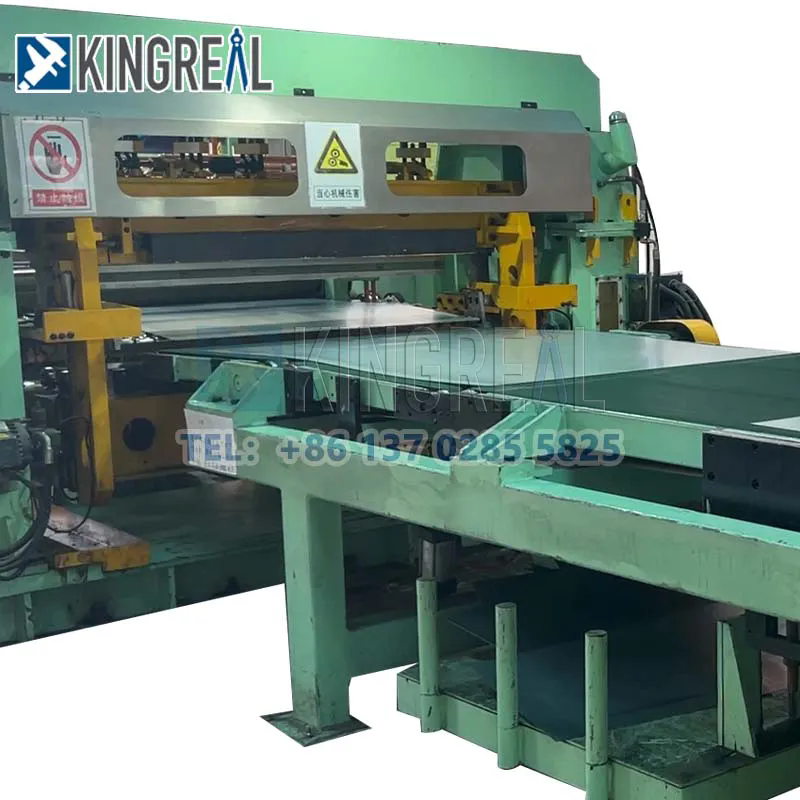The Precision and Efficiency of Metal Cut-To-Length Machines: A Comprehensive Guide
2024-08-20
In the manufacturing and fabrication industries, precision and efficiency are key to delivering high-quality products and maintaining competitive advantage. Among the various tools and machines designed to meet these demands, the metal cut-to-length machine stands out as an essential piece of equipment. This machine is designed to cut metal sheets and coils to specific lengths with great accuracy and consistency, making it a cornerstone in many production lines.
What is a Metal Cut-To-Length Machine?
A metal cut-to-length machine is a specialized piece of industrial equipment used to cut metal coils or sheets into predefined lengths. This machine is commonly used in metal processing industries to prepare metal for further processing or for end-use applications. The process involves unwinding a coil of metal, feeding it through various rollers and cutters, and then cutting it into sheets of desired lengths.
How Does a Metal Cut-To-Length Machine Work?
1. Unwinding:
The process begins with the metal coil being unwound from a spool or reel. The coil is carefully fed into the machine, ensuring that it remains aligned and free of kinks or twists.
2. Leveling:
After unwinding, the metal is passed through a leveling unit that removes any internal stresses and flattens the metal to ensure a smooth, even surface. This step is crucial for achieving precise cuts and maintaining quality.
3. Shearing:
The leveled metal is then fed into a shear or cutting unit, which slices the metal into the desired lengths. Shearing can be done using various methods, such as rotary shears, guillotine shears, or hydraulic shears, depending on the machine’s design and the type of metal being processed.
4. Stacking:
Once cut, the metal sheets are stacked neatly and often bundled for further processing or shipping. Automated stacking systems can be used to ensure that the sheets are aligned correctly and handled efficiently.
5. Rewinding (if applicable):
In some machines, especially those used for processing large coils, the machine may include a rewinding unit to re-coil any scrap or excess material for recycling.
The Benefits of Using a Metal Cut-To-Length Machine
1. Precision and Consistency:
Metal cut-to-length machines are designed to deliver high precision and consistent results. The ability to cut metal to exact lengths ensures that each piece meets strict specifications, reducing the need for additional finishing or adjustments.
2. Increased Efficiency:
These machines are built for high-speed operation and can process large volumes of metal quickly. This efficiency not only speeds up production but also reduces labor costs and minimizes material waste.
3. Improved Quality:
By ensuring uniform cutting and leveling, metal cut-to-length machines help maintain the quality of the finished metal products. This consistency is crucial for applications where precision is critical, such as in aerospace, automotive, and construction industries.
4. Versatility:
Metal cut-to-length machines can handle a variety of metals, including steel, aluminum, and stainless steel, as well as different thicknesses and coil sizes. This versatility makes them suitable for a wide range of applications and industries.
5. Automation Capabilities:
Modern cut-to-length machines often come with advanced automation features, such as programmable controls, automated feeding and stacking systems, and real-time monitoring. These features enhance the machine’s performance and ease of use, further increasing productivity.
6. Cost Savings:
By reducing the need for manual labor, minimizing material waste, and improving production speeds, metal cut-to-length machines offer significant cost savings. Their efficiency and precision contribute to lower operational costs and higher profitability.
Applications of Metal Cut-To-Length Machines
1. Steel Processing:
In the steel industry, cut-to-length machines are used to prepare steel sheets and coils for further processing, such as stamping, welding, or coating.
2. Automotive Manufacturing:
The automotive industry relies on metal cut-to-length machines to produce components and parts with precise dimensions, ensuring that they fit and function correctly in vehicles.
3. Construction:
For construction applications, cut-to-length machines provide metal sheets and profiles that are used in building structures, roofing, and other construction elements.
4. Aerospace:
The aerospace industry requires high precision and quality in its metal components. Cut-to-length machines play a critical role in producing parts that meet stringent specifications and performance standards.
5. Home Appliances:
Metal cut-to-length machines are also used in the production of metal parts for home appliances, such as refrigerators, washing machines, and ovens.
Choosing the Right Metal Cut-To-Length Machine
When selecting a metal cut-to-length machine, consider the following factors:
- Material Compatibility: Ensure the machine can handle the specific type of metal you are working with, including its thickness and width.
- Cutting Precision: Look for machines that offer high precision and can meet your specific length requirements.
- Production Speed: Choose a machine with the appropriate speed and capacity to match your production needs.
- Automation Features: Consider machines with advanced automation options to enhance efficiency and reduce manual intervention.
- Maintenance and Support: Select a machine from a reputable manufacturer that offers reliable maintenance and support services.
Conclusion
Metal cut-to-length machines are indispensable tools in the modern manufacturing and fabrication industries. Their precision, efficiency, and versatility make them essential for producing high-quality metal products across a variety of applications. By investing in a metal cut-to-length machine, businesses can enhance their production capabilities, improve quality, and achieve significant cost savings. Embrace the benefits of these advanced machines and take your metal processing operations to the next level with precision and efficiency.



